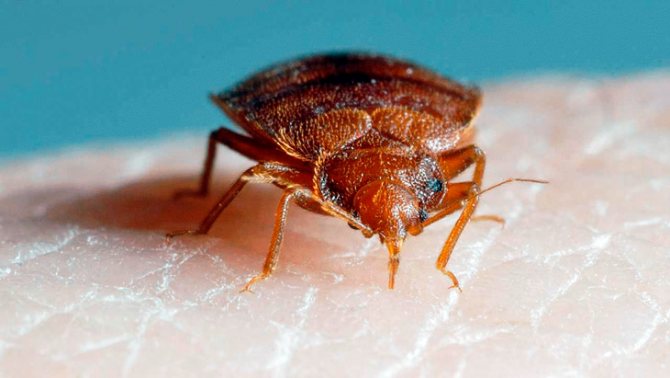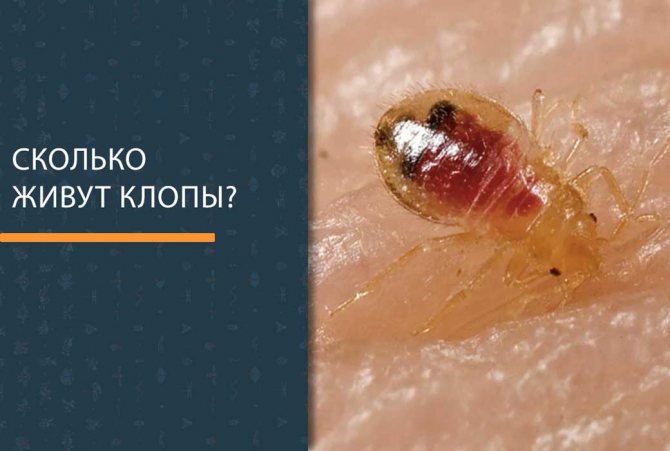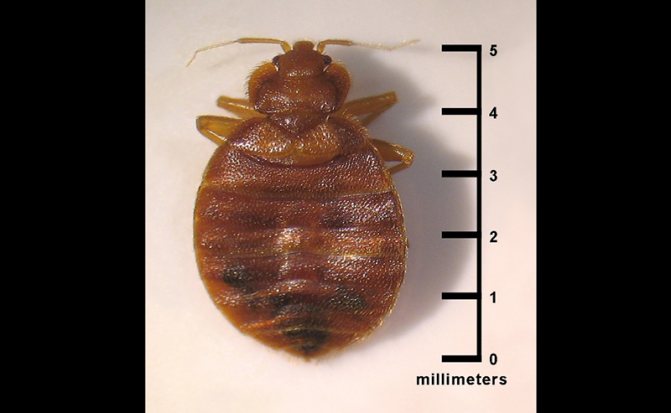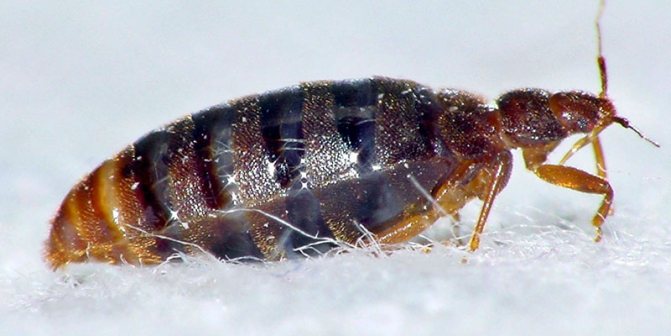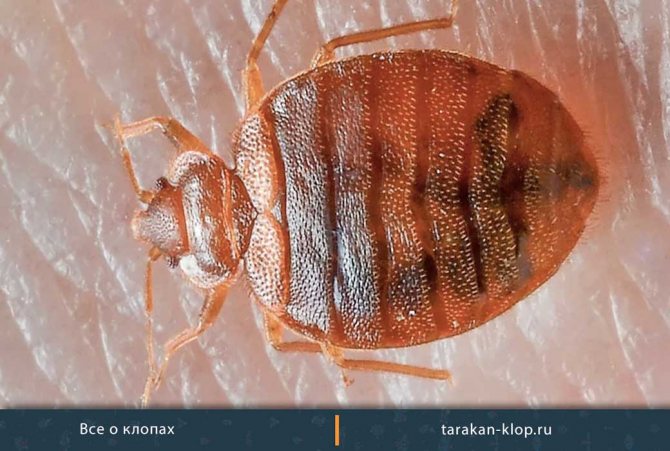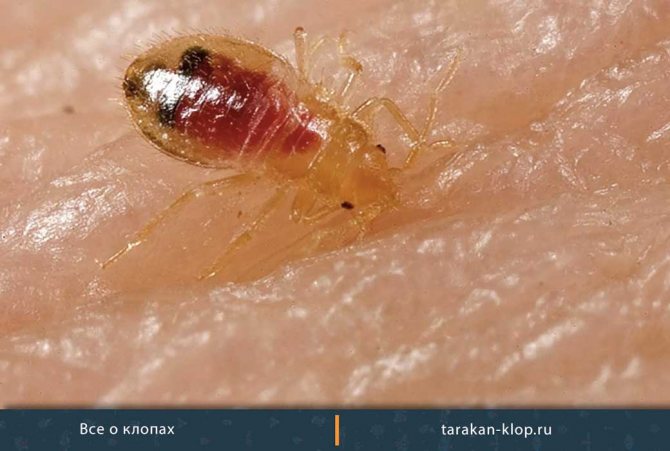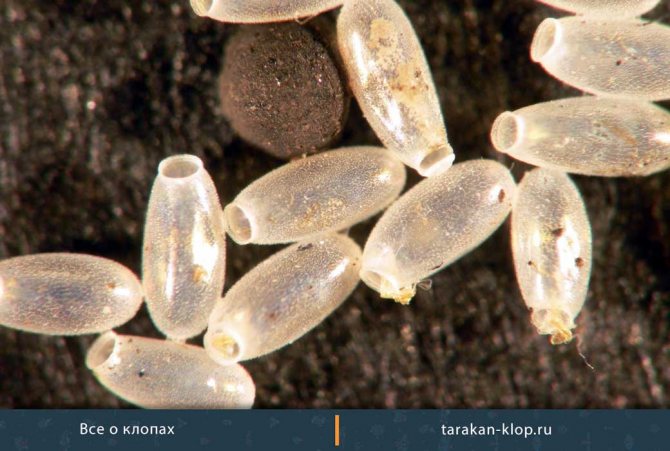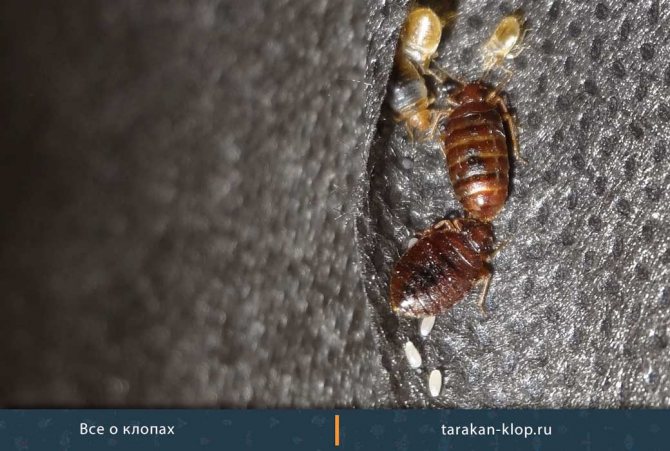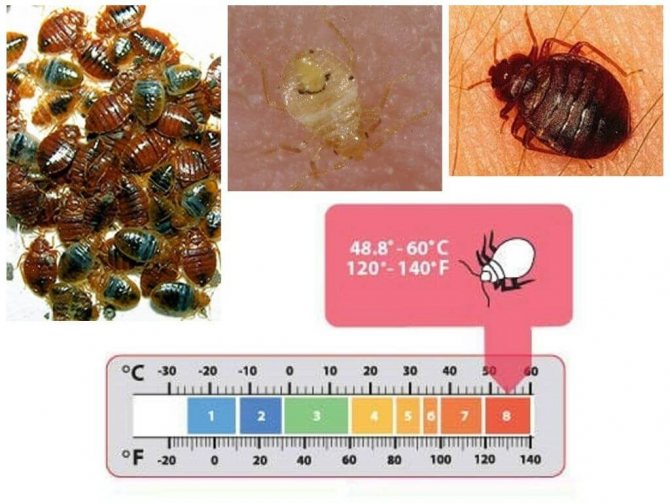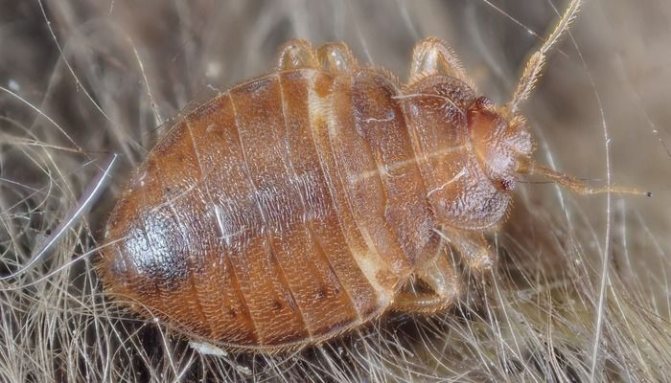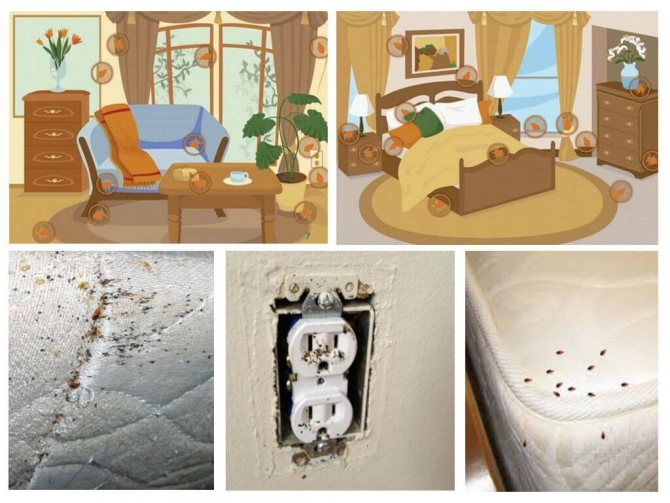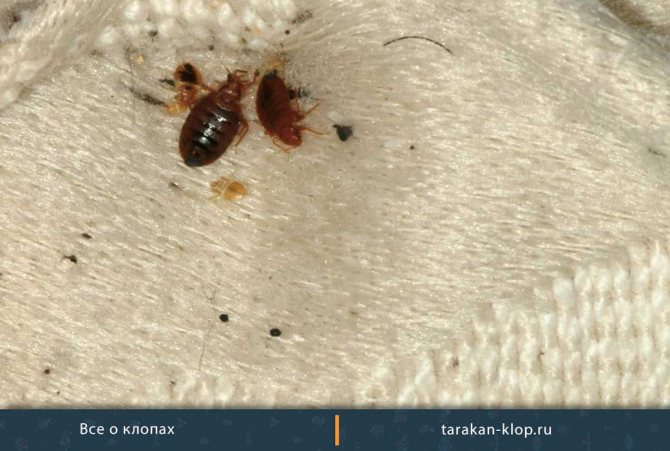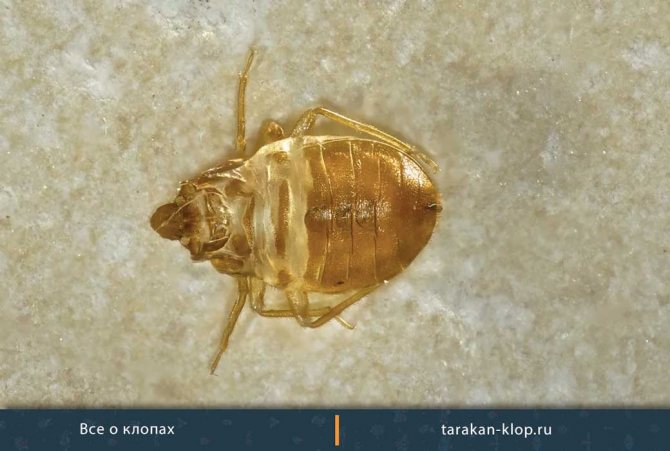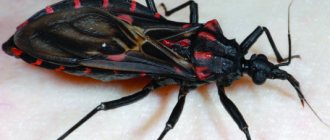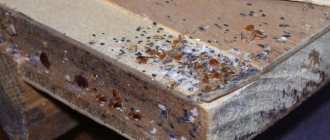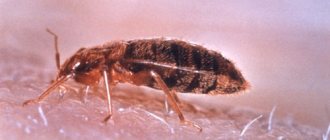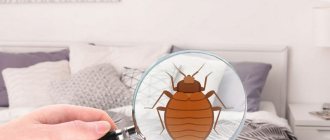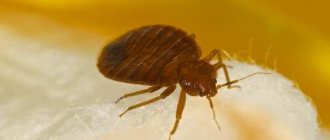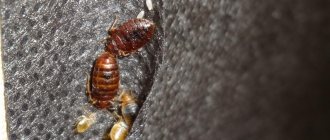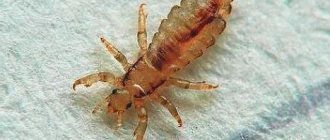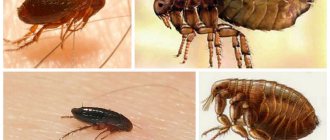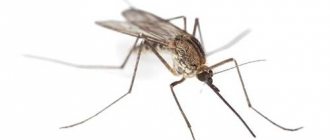Finding in their apartment a tribe of small but bloodthirsty "monsters", many fall into despair: as long as bugs live in the world, so much humanity fights with them. The vitality of these insects is truly unique. It is not clear why, but nature seems to have done everything so that the bug family as a species does not disappear from the face of the earth.
But is the devil really so scary as he is painted? Maybe you just need to learn more about small parasites in order to fight them more successfully?
The lifespan of a house bug
The life cycle of parasites is divided into several successive stages: egg, nymph, imago. For a full and fast transition from one to another, it is necessary to feed with human blood. Getting into a new territory, the female is intensively looking for a source of food and begins to reproduce.
She lays eggs regularly, from which a new population soon hatches. In comfortable conditions, bed bugs live for about 10-12 months, of which 1.5 months fall on the development of the larva. The rest of the time the parasite reproduces.
Habitats of bed bugs
Bed bugs can hide in various small hiding places. They will hide in suitcases, shoe boxes. They like to hide in small cracks and crevices close to the human environment. Bloodsuckers are most commonly found in bed details such as mattresses, springs, and folding areas. Species of bedbugs that feed on humans never occur in nature. They can be found in any public place, not limited to one specific type of dwelling. Pest control companies have reported infestations everywhere, including private homes, apartment buildings, hotels, hospitals, schools and colleges, office buildings, shops, movie theaters, and even public transportation. Nowadays, even five-star hotels and high-end clothing stores are susceptible to infections. They live mainly in closets, things, furniture and cracks in wooden products. Bloodsuckers evolved and became real "hitchhikers", attaching themselves to people's clothes and moving, thus, with them.
It is interesting
In an attempt to hide safely, bedbugs use tight places in which their body is tightly in contact with the walls of the shelter, creating a feeling of protection due to the instinct with which they hide in nature - earth, stones and wood. In the same way, in a person's dwelling, they take a fancy to all kinds of cracks in the floor and walls, as well as in interior items. Having a flat shell, this parasite is placed even in visually invisible holes.
Bed bugs can hide for an extremely long time in clothing, furniture, or even on the owner, until they find a suitable area to maintain a population that would correspond to their comfortable temperature regime.
They find suitable conditions in a human dwelling, where a stable heat is maintained. Bedbugs often choose a place for themselves where there is no direct access to fresh air - in beds and mattresses.
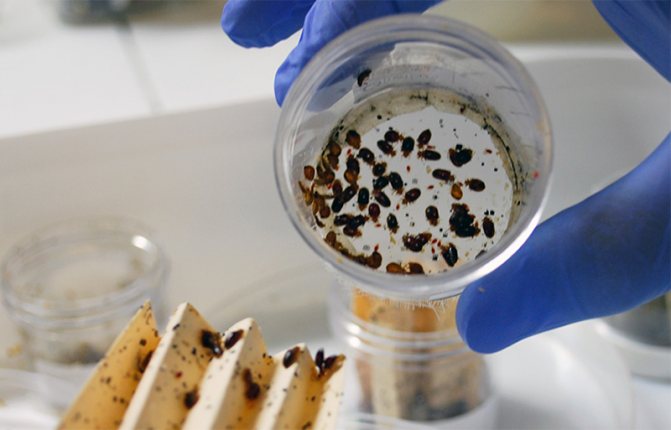
Bedbugs have specific skills that help them go unnoticed, and this is due to their widespread occurrence, as they easily hide in luggage and other moving objects.Another spread is through contaminated beds, couches, and other used furniture that is moved to a new home. This factor makes places such as hotels, hostels and other residential establishments for travelers a problem with bed bugs. The most problematic residential areas are old apartments and hostels. The likelihood of bedbugs in these rooms is greatly increased due to frequent changes of visitors, warm temperatures and the presence of secluded places in which to hide.
Unlike other insects that thrive in dirty, unsanitary conditions, bed bugs love dryness and order. The cleanest houses, buildings, rooms, furniture and fabrics can be contaminated. Being exclusively lovers of human blood, and not food waste, any place of their appearance can be at risk of infection.
Duration of development of eggs and larvae
Egg clutches are found in hard-to-reach places of the living quarters, hidden from prying eyes. Clusters number up to 50 granular white capsules, microscopic in size. From above, they are protected by a dense shell, so that external negative factors do not affect them in any way.


Depending on the temperature regime, the development of the embryo inside varies from 5 to 16 days. The emerging larva is no more than one and a half centimeters long. Before turning into an adult, it goes through 5 stages. Nymphs are born whitish, but as a result of a five-fold molt they darken and become like adult bloodsuckers.
The larvae molt only when they are regularly saturated with blood. If the source is freely available, then each stage lasts 6-7 days. The interval from hatching to transformation into an adult parasite takes about 36 days.
How parasites enter people's homes
There are many ways. The main methods to enter the premises:
- They pass through communications from neighbors;
- Through things, equipment, furniture, various products that were brought from places where insects were settled;
- Through the clothes of the owners of the apartment, if they have visited the infected premises.
It is almost impossible to find small creatures during the day - they sit quietly in their nests and do not bother people. They stop sleeping with the arrival of night. This is the time when they need food.
If bedbugs live in ideal conditions, parasites multiply very quickly. The female lays about 10 eggs per day, from which larvae appear on the fifth day. The bug egg resembles regular rice.
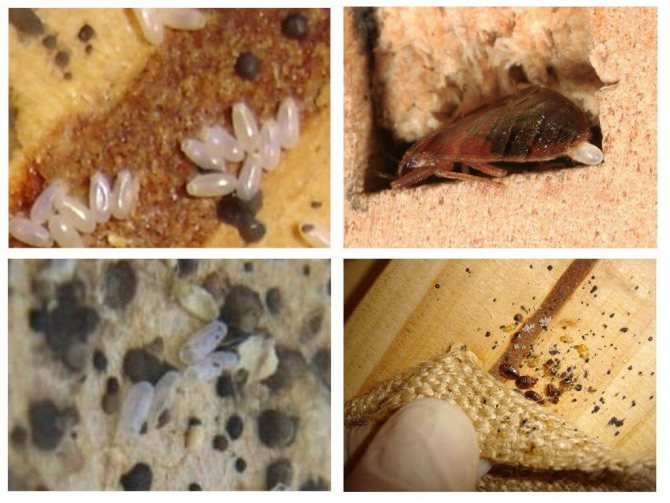

Eggs
How long can they live without blood
For the destruction of parasites, it is important to know how much they are able to exist without human blood.
The survival time of bedbugs without food, depending on the stage of development:
| 1 | 2 | 3 | 4 | 5 | Adult males | Mature females | |
| Number of days | 12-38 | 22-75 | 25-124 | 30-131 | 40-140 | 43-107 | 40-100 |
According to statistics, it can be seen that adult insects do not live so long without a lack of blood. But according to recent studies, it turned out that modern bugs are less tenacious, due to the developed resistance to progressive chemicals.
How long can parasites live after being bullied?
How long bugs live after treatment with certain drugs and how long it takes to completely destroy the colony depends on the specific drug. In most cases, insects die instantly, on the first day. However, there is a remedy that does not work immediately, but infects the entire colony. All small creatures are gradually dying out.
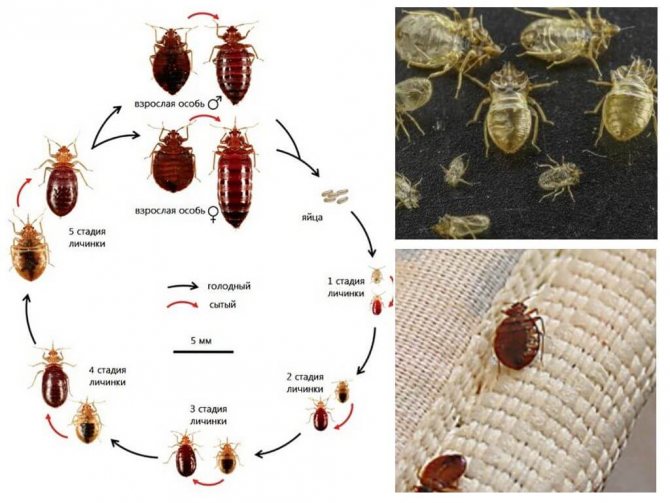

Stages of development
A certain temperature regime is destructive for bloodsuckers. When exposed to high temperatures (60 degrees), the house bug dies within 20-30 minutes. Under the influence of hot steam, their death is lightning fast. Such cleaning measures should be carried out only in an empty apartment.It is best to invite specialized companies that have the necessary equipment and comply with all safety requirements and rules for the destruction of pests. This is the only way to treat the apartment from bedbugs as efficiently as possible.
To get rid of parasites on your own, it is necessary to carry out several treatments, since most modern drugs act on adults and larvae, and the eggs are reliably protected by the shell.
Effect of chemical resistance on survival
It can be seen from the table above that the lifespan range for parasites varies. This is influenced by the degree of insect vulnerability to insecticide exposure. Experiments were carried out where individuals of different cultures participated: sensitive (artificially grown in laboratory conditions) and persistent (domestic).
It turned out that resistance to pesticides plays a direct role in the duration of the life cycle of parasites. Among all age groups, chemically resistant insects die 3 times faster than their sensitive compatriots.
Entomologists explain this phenomenon by the increased production of detoxification enzymes by the organisms of bloodsuckers. This negatively affects the physiological mechanisms, since all energy resources are spent in the other direction. As a result, there is no strength left to recover from a long hunger strike and other harmful situations.
Do bedbugs have life after disinfection?
Clinical microbiology reviews note that they are not only able to survive in a number of conditions. Their number has been growing rapidly since the beginning of the 21st century.
Bed bugs around the world are becoming immune to common pesticides like DDT.
Bed bugs develop resistance to common pesticides. They are immune to insecticides such as deltamethrin, bifenthrin, and chlorfenapyr.
25% of bed bugs survived within seven days of taking a dose of bifenthrin. Considering that these are the most common pesticides that are used for pest control.
How does the ambient temperature affect insects?
Starvation of parasites in various conditions has been studied by scientists for a long time. Scattered results were noted:
- Research by Kemper (1930) - at a temperature of + 20-22 ° C and an average humidity of 40%, stage 1-2 larvae live 80-83 days, adults - 125-140 days.
- Achievements of Baykot (1914) - in a room without heating, bugs of different ages live up to 18 months.
- Johnson's indicators (1940) - female bloodsuckers are able to tolerate the absence of a food source for up to one and a half years. No other data has survived.
The latest research by Andrea Polanco was carried out at a temperature of 26 ° C and a humidity of 70%. The bugs lasted 16 months.
It is obvious that the massive use of insecticidal drugs and comfortable living conditions have made a number of changes in the survival time of bed bugs. According to the latest data, parasites are able to do without a constant food source for more than a year.


When the air temperature drops below 15 ° C, insects hibernate if people are absent for a long time. Smelling the fresh smell of blood, they wake up and begin to function with the same intensity.
The life cycle of a bug in favorable conditions
In the presence of comfortable living conditions (food, air temperature, humidity level), the average duration of the biological cycle of a pest is from 10 months to 1 year. They include all stages of development:
- 5-20 days - embryo (egg).
- 1-3 months - nymph (larva).
- 6-9 months - adult.
Note: the spread of time intervals depends on the temperature in the room and directly affects how long the bed bug lives at one stage or another.At + 20 ° C, the insect develops more slowly, and at + 30 ° C, the body becomes more active and reaches maturity very quickly.
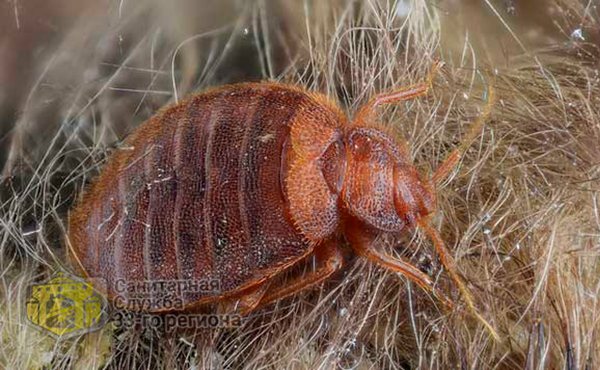

Is it possible to exterminate bedbugs by hunger
Leaving the living space, in order to destroy the infested parasites, is inappropriate. Given their ability to live long without blood, even 2-3 months of a closed room will not give the desired result.
Eggs and persistent bloodsuckers will still survive and multiply instantly. Another option is that when they are hungry, they massively migrate to their neighbors, and then return back in the same composition. To date, it is impossible to efficiently disinsect a living space without the use of pesticides. But fencing them from a food source will serve as a temporary preventive measure and reduce their numbers.
Under what conditions do bed bugs not survive?
Despite the vitality of the bug colony, ectoparasites also have vulnerabilities. Critical conditions for arthropods include extreme temperatures and exposure to a number of insecticides.
Temperature factor
Speaking about the effect of temperatures, one must understand how bloodsuckers live and reproduce when comfortable living conditions change.
Influence of temperatures on the bug population:
- + 30 ° С - active reproduction, the need to eat often;
- + 50 ° С - rapid death of adults;
- -20 ° С - the death of the bug occurs within two days;
- + 15 ° С - slowing down of all processes, falling into suspended animation.
Bedbug larvae adapt better to temperature fluctuations. They are not afraid of short-term frosts down to -22-24 ° С and heat up to + 50 ° С. Thanks to the protective shell, the eggs prevent the death of the embryo. They are resistant to multiple temperature changes. It is possible to destroy the eggs of bedbugs only when freezing at -30 ° C and warming up to + 55-60 ° C.


Many popular methods for removing bedbugs are based precisely on temperature exposure. Popular options for physical destruction:
- Freezing. The point is to keep the room as cool as possible. On a frosty day, the windows are opened wide, left to ventilate for several hours. The method is ineffective and unsafe - there is a risk of damaging communications, spoiling equipment. To improve performance, some take furniture out in the cold.
- Thermal gun processing. To increase the temperature, use a thermal gun designed for mounting stretch ceilings. The unit heats the apartment up to + 60 ° C, provoking the death of insects, including cockroaches, fleas. A household steam generator is also used for baiting bedbugs. The device is convenient to use, but it works locally - it is very difficult to remove the entire colony of bloodsuckers.
- Ironing and washing. Bed linen can be treated with a heated iron or washed at + 60- + 90 ° C. However, it will not work to exterminate the bugs that have perched in the nests.
- Exposure to UV rays. On a cloudless day, furniture, things are taken out into the street and left in a lightened area - direct sunlight is fatal for bedbugs.


The effectiveness of thermal methods is low, some of them are suitable only in the initial stage of infection. In cases where bedbugs have long settled in an apartment and equipped nests in the walls, floor, then professional pest control is indispensable.
Lack of power
It is almost impossible to remove bed bloodsuckers, depriving them of a source of food. Considering how many years the bugs live and their ability to anabiosis, even if you leave the apartment for six months, there is a risk that the most hardy ectoparasites will survive.
In addition, there is a high probability that when looking for food, insects will move to neighbors, and then return back.
Will bedbugs go away if you deprive them of food?
From the above, we can conclude that bedbugs adhere to the following positions during the absence of food:
- become suspended insects;
- migrate;
- self-destruct the population by eating each other.
It is a great delusion to think that if you remove all living things from the room, then the bugs will go away forever.These insects are too lazy to migrate in search of better living conditions. Migration can occur if the temperature in the dwelling drops to minus 22 degrees, or vice versa, rises above 50.
Do not hope that the pests will leave the apartment themselves or destroy the population by eating each other. This will take too much time, which often people do not have enough. Of course, you can check how much the insects will destroy each other if they do not go in search of a new home.
For these reasons, there is no need to postpone the call to the specialists of the pest control service. Professionals will cope with cleaning the room from bedbugs in a matter of hours, and the result of the work will be visible almost immediately.
Before carrying out work on the destruction of bloodsuckers, it is worth warning the neighbors about this so that they spray all surfaces with a special-purpose aerosol that destroys pests. Otherwise, they will become the next victims of bedbugs.
Food
After midnight, with the onset of sound sleep in humans, the bugs go hunting. Their eyesight is very weak, but their sense of smell is well developed, so they find their prey by smell. The insect looks for open areas of the body, trying not to get under the blanket, pierces the skin with its proboscis and injects saliva, which has an analgesic effect. The bed bug then finds a blood vessel and sucks blood from it for 5-15 minutes until it is full.
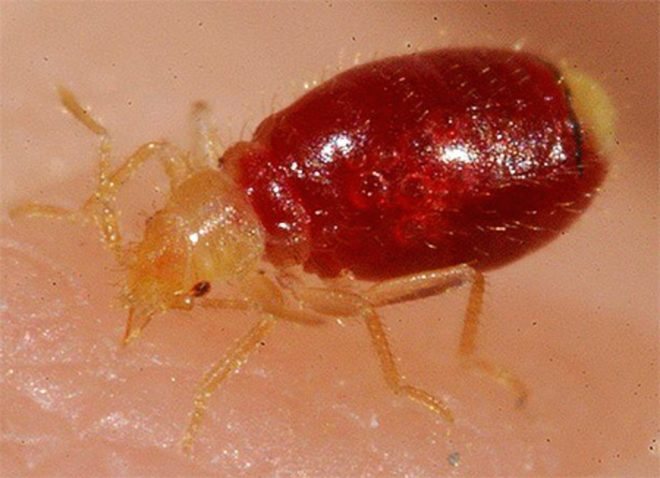

At the same time, its body swells, almost doubling in size, the larvae become bright scarlet, and the adult parasites - dark red. At a time, the bug makes several punctures on the skin, in the morning they look like swollen red spots, often located one after the other, in a chain.
Most of all, insects annoy people with thin skin, children and young women. The bug bites animals less often, but if there is not enough food, it also feeds on their blood. For normal development, it is enough for him to eat once every 5-7 days.


